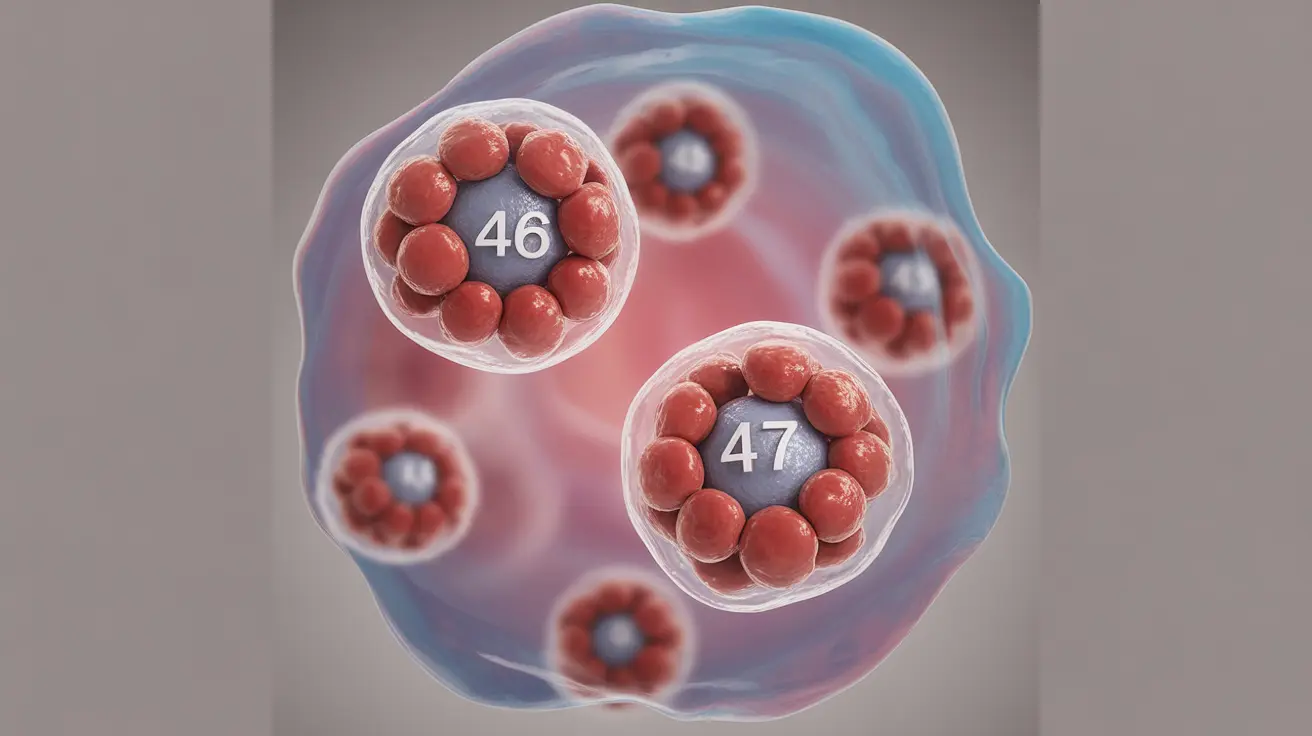Mosaic Down syndrome is a rare genetic variation of Down syndrome that affects approximately 2-4% of individuals with Down syndrome. Unlike typical Down syndrome, where every cell contains an extra copy of chromosome 21, mosaic Down syndrome results in some cells having the extra chromosome while others don't. This unique characteristic can lead to different patterns of development and varying degrees of symptoms.
Understanding mosaic Down syndrome is crucial for families, healthcare providers, and individuals affected by this condition. This comprehensive guide explores its causes, symptoms, diagnosis, and available treatment options to help provide clarity and support for those impacted by this genetic condition.
What is Mosaic Down Syndrome?
Mosaic Down syndrome occurs due to a cell division error that happens after fertilization, during early fetal development. This timing differs from typical Down syndrome, which results from an extra chromosome present at or before conception. The term "mosaic" refers to the mixture of cells – some with the typical 46 chromosomes and others with 47 chromosomes (including the extra copy of chromosome 21).
Physical Features and Symptoms
People with mosaic Down syndrome may display various physical characteristics and health conditions, though often with less prominence than those with typical Down syndrome. Common features can include:
- Facial features such as upward slanting eyes and a flatter facial profile
- Low muscle tone (hypotonia)
- Small stature
- Single palmar crease
- Smaller hands and feet
The presence and severity of these characteristics can vary significantly among individuals, depending on the proportion of cells affected by the extra chromosome.
Diagnosis and Testing
Diagnosing mosaic Down syndrome involves several methods and stages:
Prenatal Testing
Prenatal screening may include:
- Non-invasive prenatal testing (NIPT)
- Diagnostic tests such as amniocentesis
- Chorionic villus sampling (CVS)
Postnatal Diagnosis
After birth, diagnosis typically involves:
- Physical examination
- Chromosomal karyotype analysis
- Genetic testing to determine the percentage of cells affected
Health Considerations and Development
Individuals with mosaic Down syndrome often experience milder health challenges compared to those with typical Down syndrome. However, they may still face various medical conditions that require monitoring, including:
- Heart defects
- Thyroid problems
- Hearing and vision issues
- Gastrointestinal concerns
Cognitive development and intellectual abilities can vary widely, with some individuals showing fewer developmental delays than those with typical Down syndrome.
Treatment and Support Options
While there is no cure for mosaic Down syndrome, various interventions can help manage symptoms and support development:
Early Intervention Programs
- Physical therapy
- Occupational therapy
- Speech and language therapy
- Educational support services
Medical Management
- Regular health screenings
- Cardiac care when needed
- Vision and hearing assessments
- Endocrine monitoring
Frequently Asked Questions
What causes mosaic Down syndrome and how does it differ from other types of Down syndrome? Mosaic Down syndrome occurs due to a cell division error after fertilization, resulting in some cells having an extra chromosome 21 while others don't. This differs from typical Down syndrome, where all cells contain the extra chromosome.
What are the common symptoms and physical features of mosaic Down syndrome? Common features include upward slanting eyes, low muscle tone, smaller stature, and certain facial characteristics. However, these features are often less pronounced than in typical Down syndrome, and their presence varies among individuals.
How is mosaic Down syndrome diagnosed before and after birth? Diagnosis can occur through prenatal screening methods like NIPT, amniocentesis, or CVS. After birth, diagnosis involves physical examination and genetic testing to determine the percentage of cells affected.
Can people with mosaic Down syndrome have milder health problems and intellectual disabilities compared to typical Down syndrome? Yes, many individuals with mosaic Down syndrome experience milder symptoms and may have fewer developmental delays compared to those with typical Down syndrome, though this varies by individual.
What treatments and therapies help manage the symptoms and health conditions of mosaic Down syndrome? Treatment typically includes early intervention programs, physical therapy, occupational therapy, speech therapy, and regular medical monitoring. Educational support services and specialized healthcare management are also important components of treatment.




